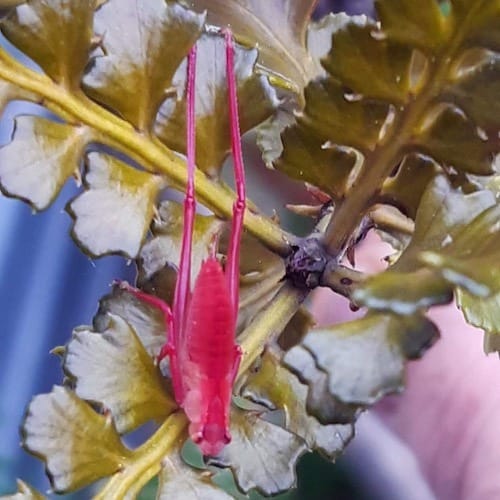The Life Of A Katydid Nymph
Posted on March 02 2021
Have you found one of these intriguing creatures in your garden? If so you’ve found an elusive katydid nymph!
With a name as aesthetically pleasing as “katydid nymph,” one might expect quite a magical creature, and many would agree that is just what a katydid is. Related to the cricket and grasshopper, a katydid is a family of insects found in every single continent except for Antarctica.
Katydids have long back legs, enabling them to jump. They also have the ability to rub their front wings together creating a “ka-ty-did” tune that gives them their special name. The other katydids can hear these sounds with flat patches on their legs that are used as ears.
Female katydids are known to be much larger than males and they have a long sharp, stinger-like structure at the end of the abdomen. This structure however is not used to sting, instead it is called an “ovipositor,” and it is used to stick their eggs into the soil, or plant stems.
The katydid is most commonly green, and this colour serves as leaf-like camouflage so they can easily blend into their habitats, away from predators. However, while katydids tend to be green, a very unique trait that katydid nymphs have is their ability to morph colours depending on the food they are eating.
In order to hide from predators, the katydid’s body will absorb the dye from the particular petal, bud or grass it is munching on, and transfer that dye to its own tissue, creating a camouflage defence. This, however, is only a defence in the early stages of their life. Their colour may be dominantly orange, or yellow or a beautiful pink when they are young, however as they mature and reach the end of their cycle (roughly 1-3 years old), all katydids will become and stay permanently green.
Predation is a big risk for the katydid, as their wings are often too large, disabling their ability to fly. As such, the species relies fully on its ability to blend and jump in order to stay alive.
In terms of personality, katydids are known to be very gentle creatures. They are nocturnal, and therefore they come out during the night-time to eat. Their main diet consists of plants and grass, and sometimes smaller sized insects, however they are not known to destroy gardens or be a threat to other native life.
If you were to pick up a katydid, it may feel threatened and give you a good bite, however their bites have been said to feel less painful than that of a mosquito. If you happen to find one of these magical creatures in your backyard, it is best to leave it in peace.
References:
1. A. (2021). BioKIDS – Kids’ Inquiry of Diverse Species, Tettigoniidae, katydids.


